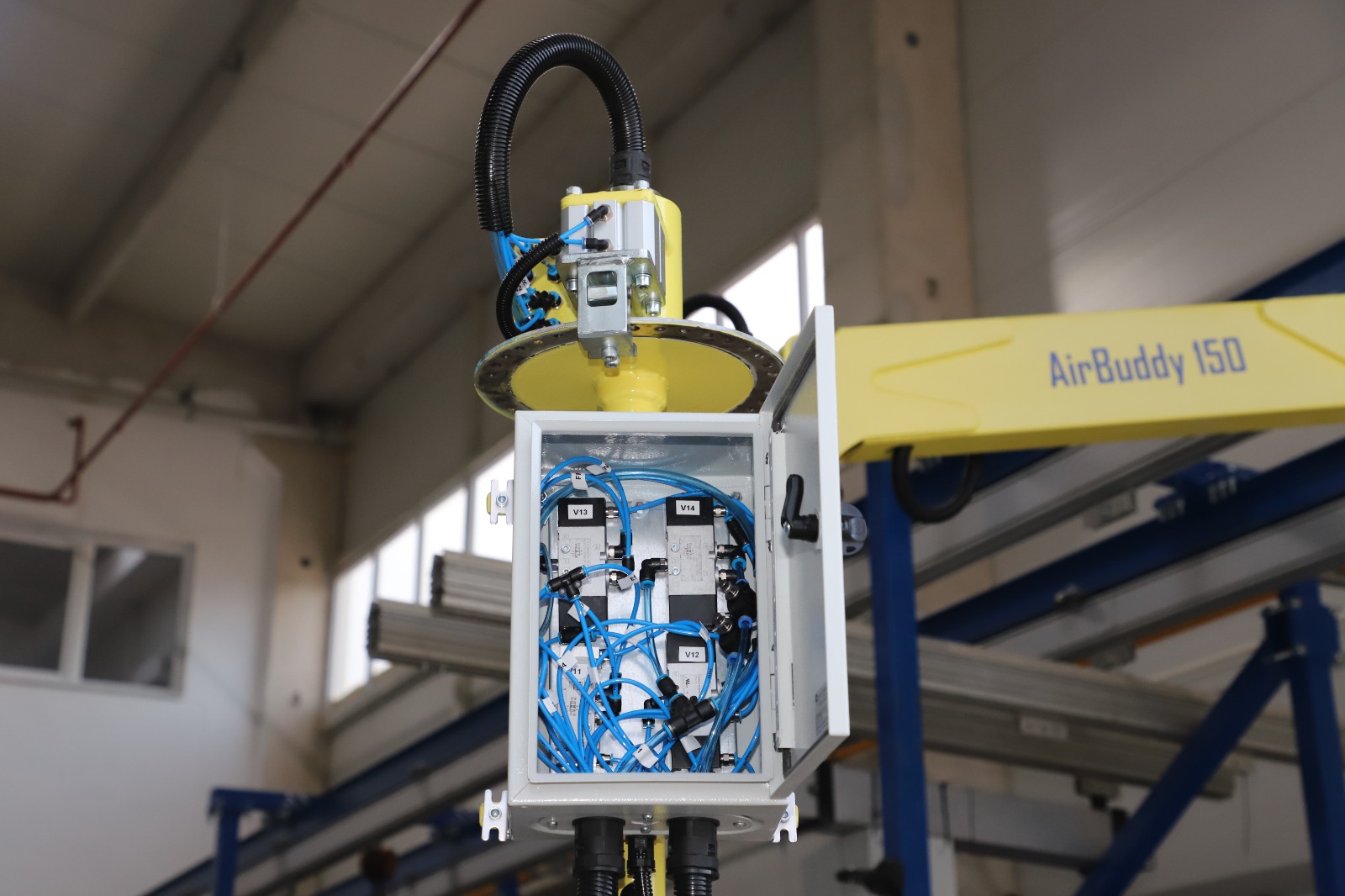Your Process's Perfect Solution: A Guide to Choosing an Industrial Manipulator
Industrial manipulators are an indispensable part of modern manufacturing. By enabling the effortless handling of heavy and awkward loads, they both increase production efficiency and elevate occupational health and safety (OHS) standards to the highest level. However, with so many options on the market, choosing the right manipulator for your business can be a complex process.
A wrong choice can lead to inefficiency, safety risks, and additional costs. In this guide, we will explore the 10 critical factors to consider when choosing an industrial manipulator to ensure you get the most out of your investment.
1. Lifting Capacity and Load Characteristics
The most fundamental question is: What will you be lifting?
- Maximum Weight: Determine the maximum load the manipulator can safely lift. Always remember to leave a margin of safety.
- Load's Center of Gravity: Unbalanced or asymmetric loads affect the manipulator's stability and control. The location of the load's center of gravity is critical for the gripper design.
2. Work Area and Reach
Clarify how far and how high the manipulator needs to reach.
- Horizontal Reach: How far the manipulator arm can extend to its furthest point.
- Vertical Reach: How high it can lift the load from the ground.
- Working Envelope: Consider the entire three-dimensional space the manipulator can access. This area should not be restricted by surrounding machinery, walls, or other obstacles.
3. Gripper Design
"The secret is in the gripper." The gripper, which is the hand of the manipulator, must be custom-designed for the part to be handled.
- Part Geometry: Is it flat, curved, perforated, or complexly shaped?
- Surface Properties: Does it have a delicate, slippery, hot, or rough surface?
- Gripper Types: You need to choose the right one from vacuum grippers, magnetic grippers, mechanical pincers, expanding mandrels, or complex custom-designed tools for the specific part.
4. Mounting Options
The placement of the manipulator in your factory determines its operational flexibility.
- Column Mounted: Ideal for fixed operations in a specific area.
- Overhead Fixed: Saves floor space and allows for a larger working area but requires a suitable ceiling structure.
- Overhead Rail Mounted: Similar to a bridge crane system, it allows the manipulator to move along a long line. Perfect for assembly lines.
5. Mobility and Axes
Is it enough to just move the load from point A to point B, or do you need more?
- Rotation: Does the load need to be rotated around its own axis?
- Tilting/Pitching: Is it necessary to change the angle of the load?
- Precise Positioning: Is it important to place the load in a narrow space with millimeter precision?
These needs determine the number of axes the manipulator must have and the design of its pneumatic circuit.
6. Power Source
Industrial manipulators typically operate on pneumatics (compressed air).
- Pneumatic Systems: They are clean, fast, and reliable. They provide the operator with intuitive control over the load by giving a "weightless" lifting feel. Ensure your compressed air supply has adequate capacity and quality (clean and dry air).
7. Safety Features
Safety is non-negotiable.
- Safety System: Safety valves that ensure the manipulator's arm and the load descend slowly and in a controlled manner, even if the air pressure is suddenly lost.
- Overload Protection: Systems that prevent lifting a load beyond its capacity.
- "Two-Hand" Buttons: Safety circuits that prevent accidents by requiring the operator to use both hands for gripping and releasing operations.
8. Operating Environment
The conditions of the environment where the manipulator will operate affect the choice of materials and components.
- ATEX/Ex-Proof: Manipulators designed for environments with explosive or flammable substances, featuring non-sparking components.
- Cleanroom: Hygienic designs made from special materials like stainless steel for the food, pharmaceutical, or electronics industries.
- Hot/Cold or Corrosive Environments: Special paint, coatings, and seals resistant to the ambient conditions.
9. Maintenance and Serviceability
A manipulator is an investment that should serve for many years.
- Spare Parts: Easy availability of critical spare parts.
- Service Support: How quickly and effectively the manufacturer or supplier offers service support.
- Ease of Maintenance: How easily and quickly periodic maintenance can be performed.
10. Ergonomics and User-Friendliness
Remember, a human will operate the manipulator.
- Control Handle: An easy-to-grip control handle that is compatible with the operator's natural hand movements.
- Responsiveness: How quickly and smoothly the manipulator responds to the operator's commands.
- Physical Effort: The minimal amount of push/pull force the operator needs to exert to move the system.
Conclusion: Choosing the Right Partner
Choosing the right industrial manipulator is more than just buying a machine; it's an investment in productivity, safety, and employee satisfaction.
At Soyerpek, we carefully analyze your process, understand your needs, and offer you custom turnkey manipulator solutions, considering all the factors above. Contact our expert team today to find the right solution for your application.

